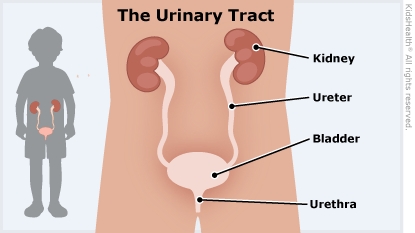A voiding cystourethrogram (VCUG) is a test that shows parts of the urinary system and if a child has vesicoureteral reflux (VUR). In kids with VUR, some of the urine (pee) goes in the wrong direction, flowing back up from the bladder into one or both ureters and kidneys. Sometimes after a VCUG, a child has mild discomfort or stinging when peeing. This usually gets better quickly. In the meantime, you can help your child feel more comfortable.



Your child has:

Your child:

How was the VCUG done? The person doing the VCUG placed a small soft tube (called a catheter) through the urethra (where the pee comes out) and into the bladder. Then, they put a liquid (called contrast) into the bladder through the catheter. This liquid helps to make the parts of the urinary system easier to see on an X-ray.
A special camera (called a fluoroscope) took X-rays of the bladder, kidneys, ureters (the tubes connecting the kidneys and bladder), and urethra. The X-rays were taken while the liquid was in the bladder and as your child peed.
Why is it important to know if my child has VUR? If it's not treated, VUR can lead to kidney infections and kidney damage.